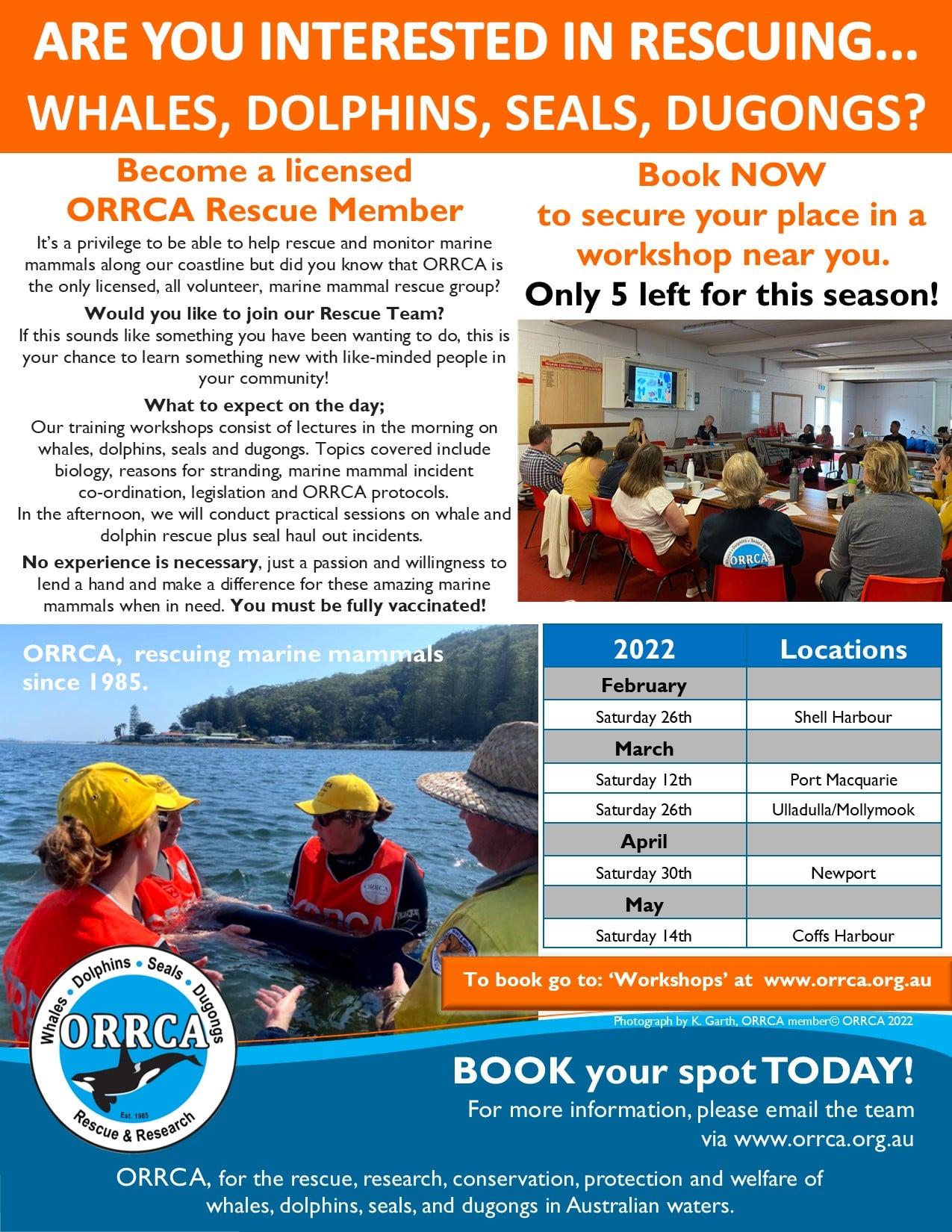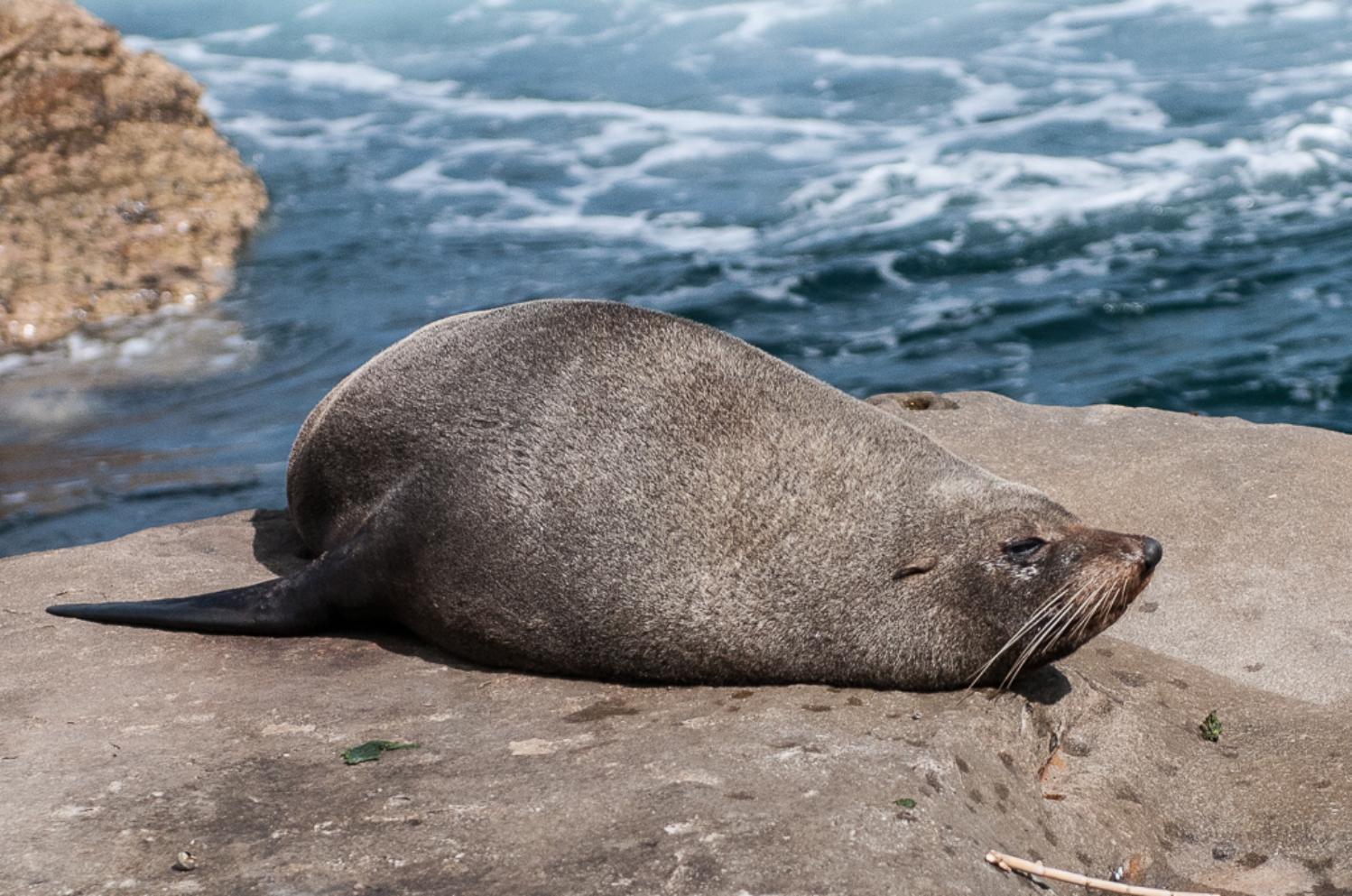March 27 - April 2, 2022: Issue 532
Learn How You Can Help Marine Life: ORRCA Workshop At Newport April 30th
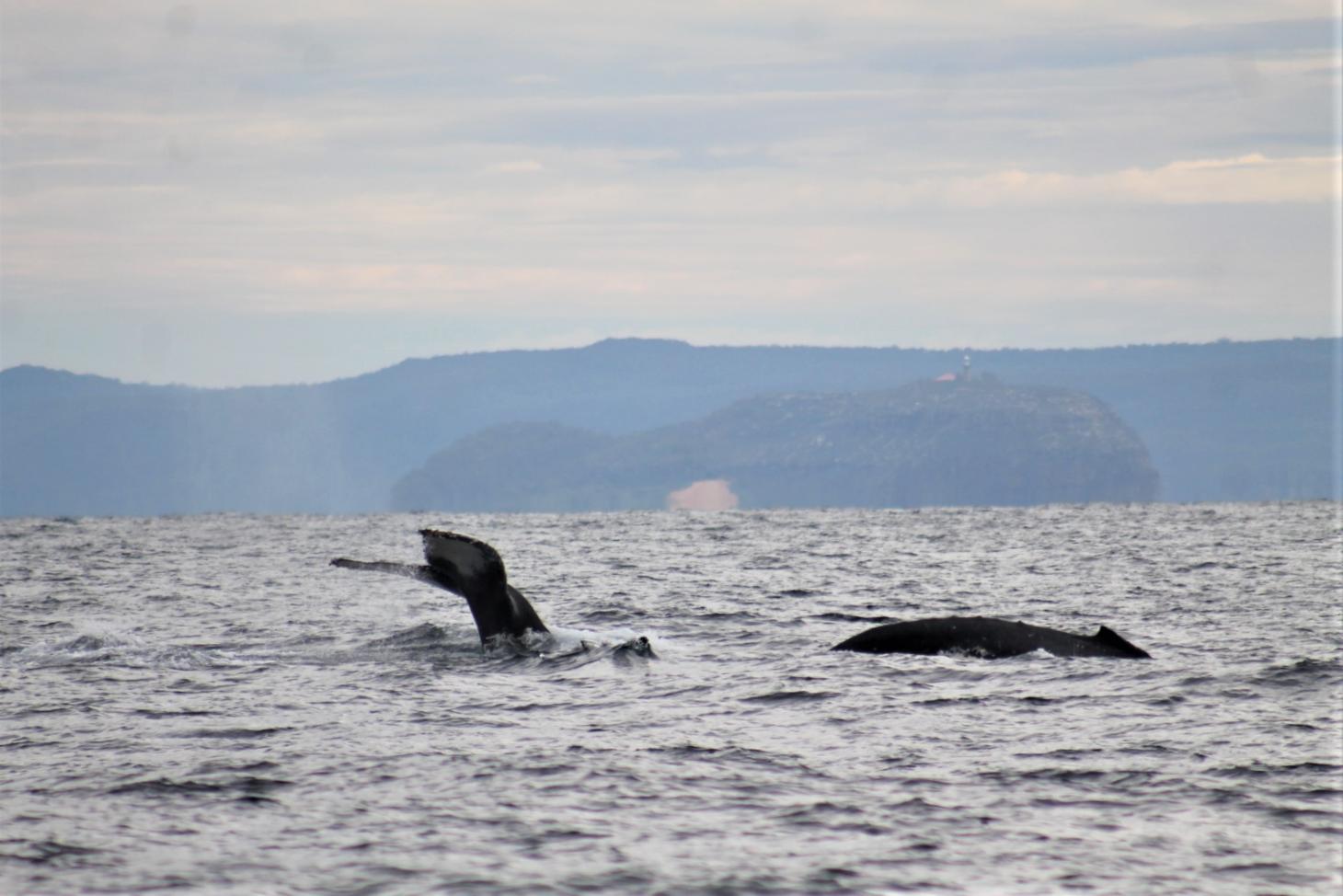
Photo: A J Guesdon.
ORRCA stands for the Organisation for the Rescue and Research of Cetaceans in Australia. This is the only volunteer wildlife rehabilitation group in NSW licensed to be involved with marine mammal rescue, rehabilitation and release. ORRCA looks out for the whales, seals, dolphins and dugongs.
As locals will have noticed over the past few years, we have a lot more marine wildlife coming ashore or being encountered in the waters off our beaches. In NSW, it is a legal requirement that any person or group interacting (rescuing, rehabilitating, or monitoring) with marine mammals must be licenced.
ORRCA has an annual authority issued by the National Parks and Wildlife Service of New South Wales (NPWS) to rescue and rehabilitate marine mammals. It is under this licence that rescue members volunteer their time to help save the lives and manage situations along our coast lines.
First you have to do the training though. As an opportunity to do so is coming up at Newport on April 30th, this week a chat with local resident Jools Farrell, ORRCA Vice President, on what's involved and what our local marine mammals have been up to.
Jools, ORRCA is hosting a Workshop in Newport on April 30th, what’s involved in a Workshop?
It’s a wonderful day – a full day. We do a Theory Session in the morning which is where you learn all about whales, dolphins, seals and dugongs. We cover the biology, reasons for strandings, marine mammal incident co-ordination, legislation and ORRCA protocols.
In the afternoon we conduct a practical session, which is a hands-on session on the beach, with a blow-up whale and a dolphin. We fill these with water and this helps the rescuers feel weight in regards to lifting a dolphin on a mat. When it comes to a whale there is, of course, no way that we would lift a whale on a mat – that’s when the National Parks and Wildlife Service comes in. If the whale is still alive when it strands and can be put back into the ocean, then that’s when NP&WS brings in the specialised equipment.
We deal mainly with dolphins, seals, at times false killer whales & occasionally other smaller species of whales/dolphins as these are smaller and we’re able to place these on our rescue mats.
This is a really informative day and people learn a lot.
What does this qualify participants for?
You need to become a member of ORRCA first and then you sign up to do the Rescue Workshop. Once you are Rescue Trained, first of all you’re covered by our ORRCA insurance if you are at a rescue and something happens. After completing the workshop you can now attend a whale that has stranded, or a seal that has hauled out on the beach, or a dolphin that has stranded, whether it’s alive or deceased. If it’s alive you learn how to keep it hydrated, how to move it around on the beach, where to touch it and where not to touch it. Basically the protocols of a rescue.
Is there a fee involved?
Yes, there’s a one-off fee for the Training Workshop of $99.00. we then encourage people to attend a refresher course every 2 to 3 years, and that is free, they don’t need to pay again. Volunteers just pay the membership fees – there’s a one-year fee and a three-year fee – which is all available on our website.
There have been a series of whale entanglements, including one at Whale Beach in October last year. Are you finding there’s an increase in these?
Yes, we are seeing more entanglements occurring. More of these are involving fishing gear; ropes and buoys that have been left by fishermen. A lot of this is legal fishing gear that has been placed in the water; crayfish or crab pots and nets that are anchored to the bottom of the ocean. There is also illegal fishing gear out there as well. What happens if this is out there during the migration times the whales swim through it and it gets caught either on their tail or part of their body and they end up dragging it behind them. We’re seeing an increase in entanglements because we’re also seeing an increase in the population of humpback whales.
What impact does this have on the whales themselves – does it stress them, do they drown?
Yes. If the whales are not disentangled, which is done by the National Parks and Wildlife Disentanglement Team, and this is dependant on where they’re entangled, it does tire them down. These do cut into their flesh, and if it’s around their tail they will eventually lose their tail. It does, unfortunately, cause death if they’re not disentangled.
Some whales have been known to disentangle themselves – that’s why we see them thrashing around a lot when they are entangled, trying to get rid of the gear or get free from it. So sometimes it does drop off itself, it just depends on how tightly it is wound around the whales’ body, and where it is wound around their body.
ORRCA doesn’t just attend to whale entanglements during the migration season. Locally we have reports of a lot more penguins, turtles and seals coming ashore and the seals, particularly, are looked after in these instances by ORRCA, including a Leopard Seal that you monitored on Bungan Beach a few years ago - aren’t they an Antarctica mammal?
They are an Antarctica animal and it is quite unusual for us to see leopard seals. Last year we only had one that did haul out. They do come up as far as our area though – as you said, I monitored one on Bungan Beach but I’ve also, since then, monitored one on Palm Beach. But we don’t see them that often.
The year previously we actually had 4 that hauled out, but last year we only had one and that was on the far South Coast.
The seals migrate at about the same time the whales do. The seals that we’re seeing now off Barrenjoey Headland are from the Barrenjoey colony, they’re long-nose seals or New Zealand fur seals and they’re all males. What they do is usually around November or December they head south and look for the girls. They mate and then they take off and work their way back up the coast.
From about now we’ll be seeing the colony at Barrenjoey increasing again as they come back here. The count we had last year was 27. I’ve been following this from about 7 years ago when we only had 2, now it’s increasing every year, which is great to see – they’re hauling out and are happy at that spot on Barrenjoey.
We work with National Parks and Wildlife to look after these and we finally got a sign up there telling people to stay away. People were actually going in on kayaks and jet skis and attempting to swim with the seals.
Not only is that a fineable offence, you have to stay a minimum of 40 metres away, they are putting themselves and the seals at risk.
Seal at Bilgola Beach, June 2013. Photo: Tamara Sloper-Harding OAM
And that applies whether they haul out at Barrenjoey or on one of our local beaches as well?
Exactly. If people see a seal hauled out on a local beach it is normal behaviour. They forage and feed at night and then they haul out during the day to rest.
For some reason they haul out in popular areas; like Bondi, Palm Beach, Manly, Dee Why, Long Reef – that’s why we need to get members down there, to monitor them and ensure they’re not approached while resting. This is what trained members can do. We have pods all up and down the NSW Coast of members, including the Northern Beaches pod. A call goes out via text message saying ‘’we’ve got a seal that’s hauled out on Palm Beach, we need members to come and monitor it’’.
This is for the public’s safety more than for the seal. People may not realise that seals can move really fast on the land, they can outrun you, and if you get bitten by a seal, you will end up in hospital as they do carry diseases.
If you come across a leopard seal, stay well and truly away as these are an apex predator and call the ORRCA Rescue Hotline on 9415 3333. These can take your arm off. If you have a dog and take that near a leopard seal all you will have left is a ball of fluff on the sand.
That’s why when this occurs we do activate members to get down on the beach. This is also a great way to educate as well people about seals and why they haul out on our beaches.
We do need more members on the Northern Beaches to help – it’s getting busier and this is why we’re holding this Workshop at Newport to get more local members. We have a feeling it’s going to be a busy season this year; so come along and get trained and get to help out.
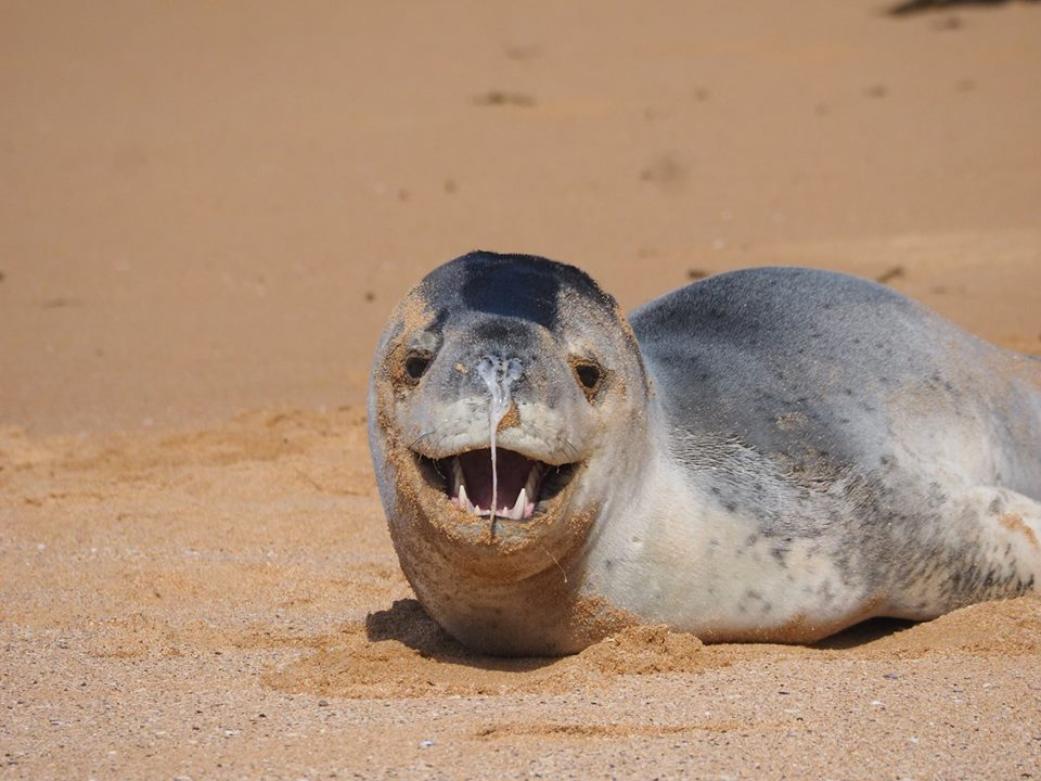
Apart from getting to look after all these wonderful animals; what’s good about being a member of ORRCA or becoming a member of the Northern Beaches pod?
You do get a lot of satisfaction out of knowing that you have done something to help these marine animals. For example, I was involved in the whale entanglement off Whale Beach, and once it was safely disentangled by the National Parks team, the feeling of elation is just amazing. You get what you do it for and why it is so important to be able to do this – it’s quite empowering and gives you a strong sense of purpose. To be able to save a whale gives you a great sense of achievement.
You also get to meet wonderful people – we all have a passion for this, we’re all there for a reason – we’re volunteers, we’re not being paid, so you do meet a lot of amazing people who are also lovely people. If you’re sitting on a beach monitoring a seal – as we always try and get a team doing this, especially if there’s a crowd being drawn to the spot – you will end up spending time with some great people, having a chat, watching the seals. You will form great friendships with like-minded people.
How do people sign up for the Workshop Jools?
They go to our website which is at orrca.org.au – they have to become a member first, which is under the Become a Member tab, and they can do all that online. Then go to the Workshops tab and click on those and then look at the dates and locations and simply pay the fee and you’re enrolled to attend.
You can do it all online. Then you will be sent confirmation and a Notice as to the exact location or venue the Workshop will be held in and we will look forward to seeing you!
There’s a few spots left for Newport – please come along and become part of the team looking after our marine animals.
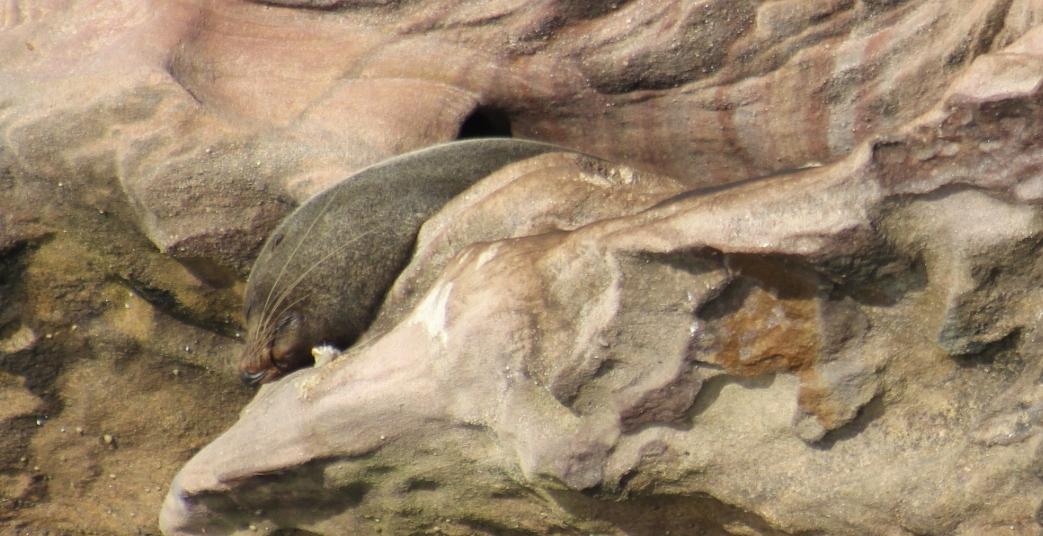
Barrenjoey seal. Photo: A J Guesdon
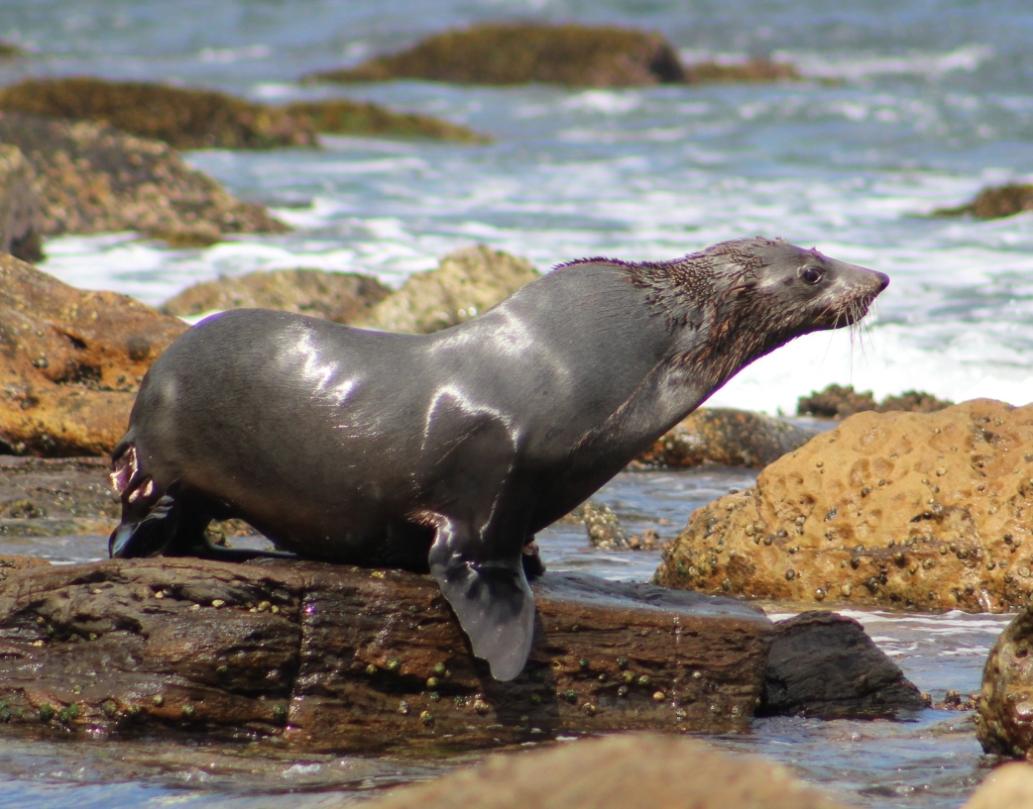
ORRCA Website: www.orrca.org.au
ORRCA Facebook page - Stay up to date with what's happening: www.facebook.com/marine.mammal.rescue
NB: It is important to note that members must be 18 years old to attend an ORRCA Rescue Training Course to become an ORRCA Rescue Team Member. ORRCA refers Penguins, Turtles and other animals which we don’t get involved with, to other animal groups.
Every year on March 22nd, the International Day of the Seal promotes the conservation of seals worldwide. It's also a day to celebrate this amazing marine mammal. A seal is a type of animal called a 'pinniped', which is Latin for “fin-footed.” Other pinnipeds include the walrus and sea lion.
Jools Farrell at the ORRCA Information Booth at a recent community event
